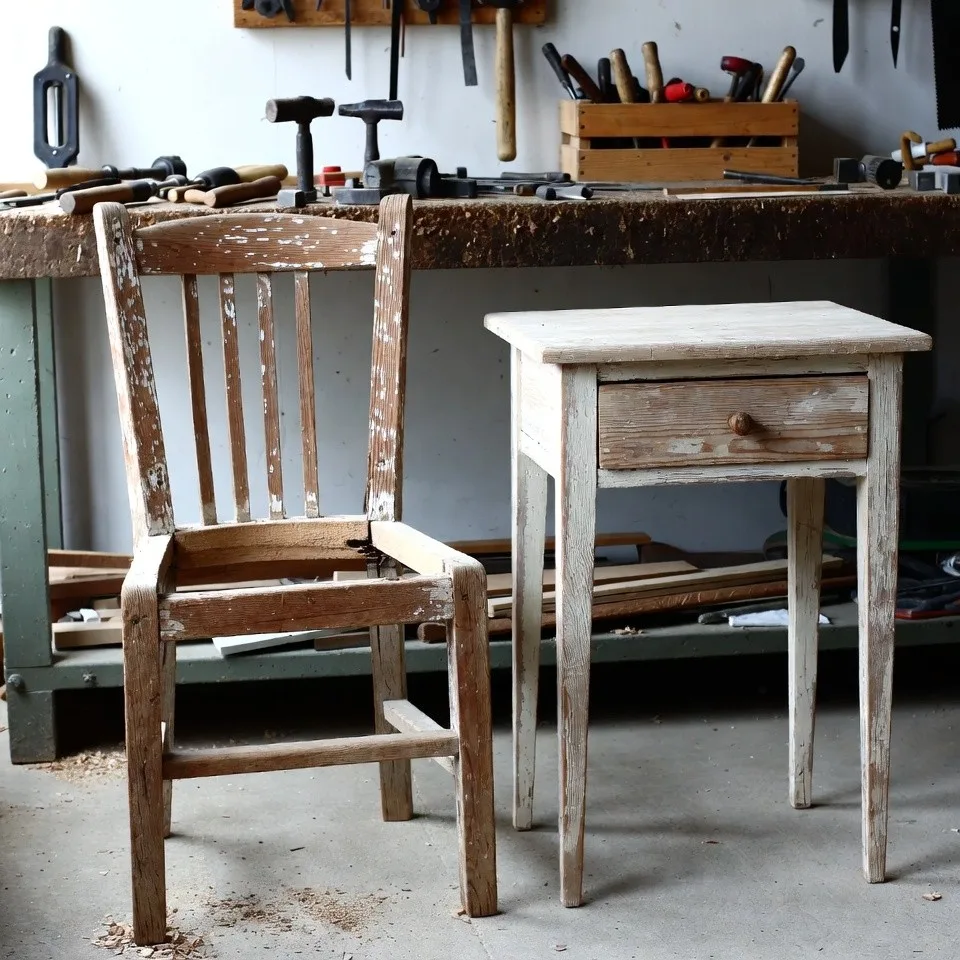Upcycling Ideas: How to Give Old Furniture a Second Life Before You Toss It

- The Case for Upcycling Furniture
Every year, millions of tons of furniture end up in landfills, creating a significant environmental burden. The rise of “fast furniture”—cheap, mass-produced items designed for short-term use—has worsened this problem. Upcycling offers a sustainable solution: transforming old, worn, or outdated furniture into something functional, stylish, and uniquely yours.
What is Upcycling?
Upcycling differs from recycling. Instead of breaking materials down, it creatively repurposes them, preserving the original structure while giving them a higher value or new function.
Benefits of Upcycling:
- Environmental Impact: Reduces landfill waste and decreases demand for new resources.
- Financial Savings: Updates a piece at minimal cost, avoiding expensive replacements.
- Personal Expression: Creates one-of-a-kind pieces reflecting your style.
Before starting, choose a piece with potential.
- Assessing Your Furniture
The key to a successful upcycling project is starting with the right piece. Look for:
- Solid Construction: Furniture made of solid wood or metal withstands sanding, painting, and modifications. Avoid flimsy fast furniture.
- Repairable Damage: Minor scratches, faded finishes, or outdated hardware can be fixed. Severe structural damage or widespread rot may be unsuitable.
The goal: find pieces with a strong frame ready for a creative transformation.
- Essential Tools and Materials
Having the right tools ensures a smooth project and professional-looking results.
Safety Gear: Gloves, masks, goggles
Preparation: Sandpaper (80, 120, 220 grit), orbital sander, screwdrivers, utility knife
Application: Paintbrushes, rollers, lint-free cloths
Finishes & Sealants: Wood stains, paints (chalk or latex), polyurethane, tung/linseed oil
Repair Tools: Wood glue, two-part wood epoxy, new hardware
Chemicals: Citrus Strip for intricate areas, mineral spirits to clean surfaces
With your toolkit ready, you can start transforming your furniture.
- Upcycling Techniques
4.1 Gentle Refresh
For pieces with good bones but tired finishes:
- Use products like Howard Restore-A-Finish to blend scratches or watermarks.
- Apply natural oils (linseed or tung) to revive cane or wood.
- Consider a thin coat of lacquer or shellac instead of full stripping.
4.2 Full Makeover
For furniture needing a complete transformation:
- Remove hardware and clean thoroughly.
- Sand: coarse to fine grit for a smooth surface.
- Chemical stripping for detailed carvings (Citrus Strip).
- Stain or paint: foam brushes for smooth surfaces, small brushes for details.
- Seal: polyurethane or other topcoats to protect and extend life.
4.3 Creative Upgrades
- Replace outdated handles or knobs.
- Reupholster fabric elements or line drawers with salvaged materials.
- Add small modifications to modernize or repurpose the piece.
- Repurposing Ideas
Beyond refinishing, furniture can be creatively transformed:
- Dresser → TV stand or bookshelf
- Headboard → Entryway bench
- Wooden pallet → Coffee table
- Vintage door → Bookshelf
- Dining chairs → Garden bench
- Old bed frame → Garden trellis
- Coffee table → Upholstered ottoman
- Step ladder → Tiered shelf
- Console table → Kitchen island
Repurposing combines function with creativity, giving old furniture a completely new life.
- When Upcycling Isn’t the Answer
Some pieces are beyond repair. In those cases, responsible disposal is key. Options include:
- Donate: Organizations like Goodwill, Salvation Army, and Habitat for Humanity ReStores accept functional furniture.
- Sell or Give Away: Platforms like Facebook Marketplace or Craigslist can connect your furniture with new owners.
- Recycle Components: Separate wood, metal, or plastic for proper recycling. Learn more with this complete guide on When and How to Dispose of Old Furniture.
- Professional Assistance: For large or cumbersome items, services like Furniture Removal Services handle safe, hassle-free disposal.
- Conclusion: The Joy of a Second Life
Upcycling furniture is an act of sustainability, creativity, and personal expression. It reduces waste, saves money, and adds unique pieces to your home. Even small projects, like updating a drawer handle or giving a chair a fresh coat of paint, create a lasting impact.
Look at that forgotten dresser, chair, or side table in the corner—its second life is waiting. Grab your tools, get creative, and transform it into something functional and beautiful. Share your results with the community using #FurnitureFlip or #UpcycledHome to inspire others.
